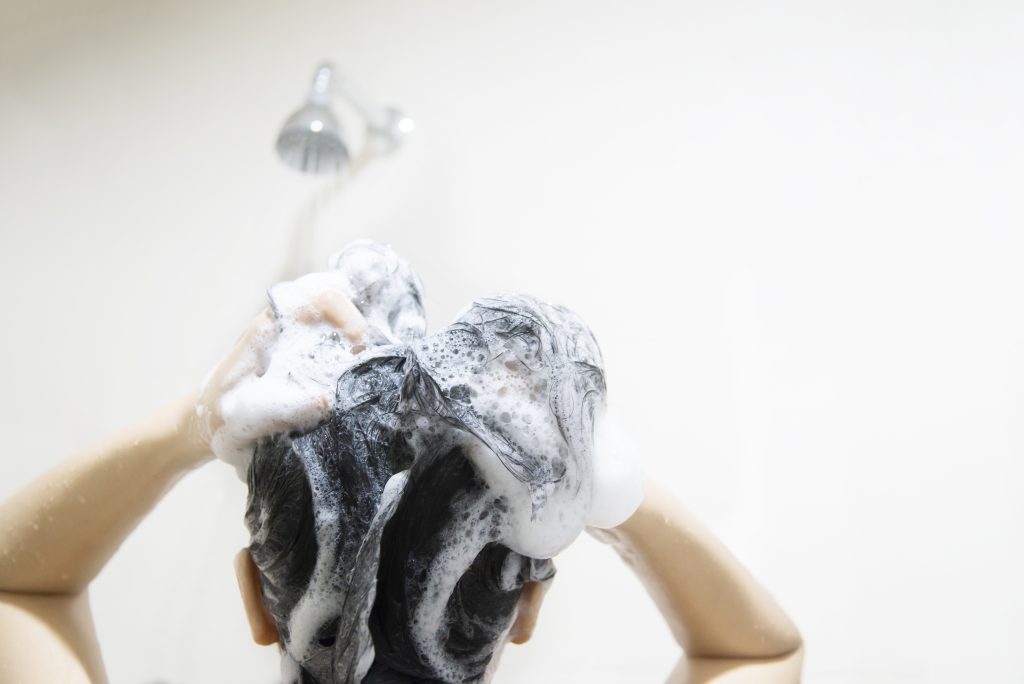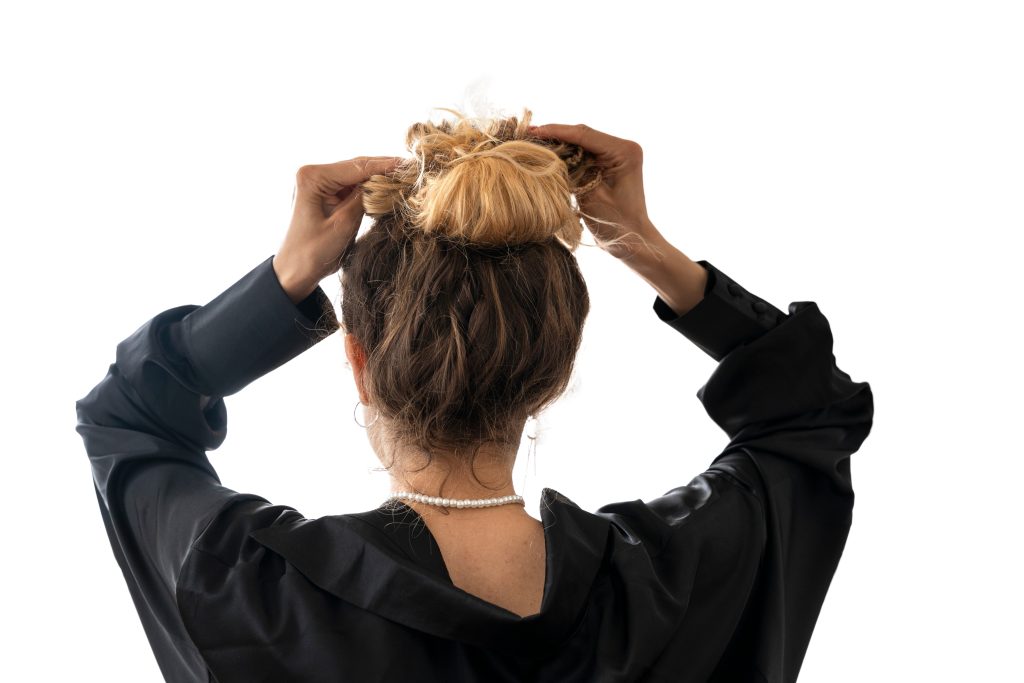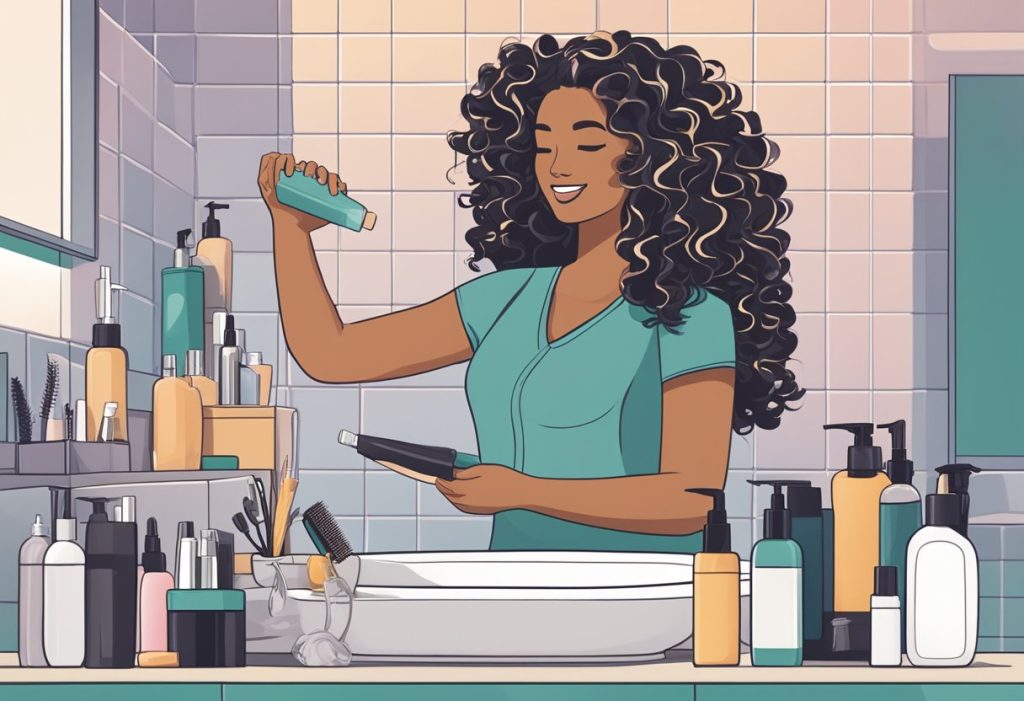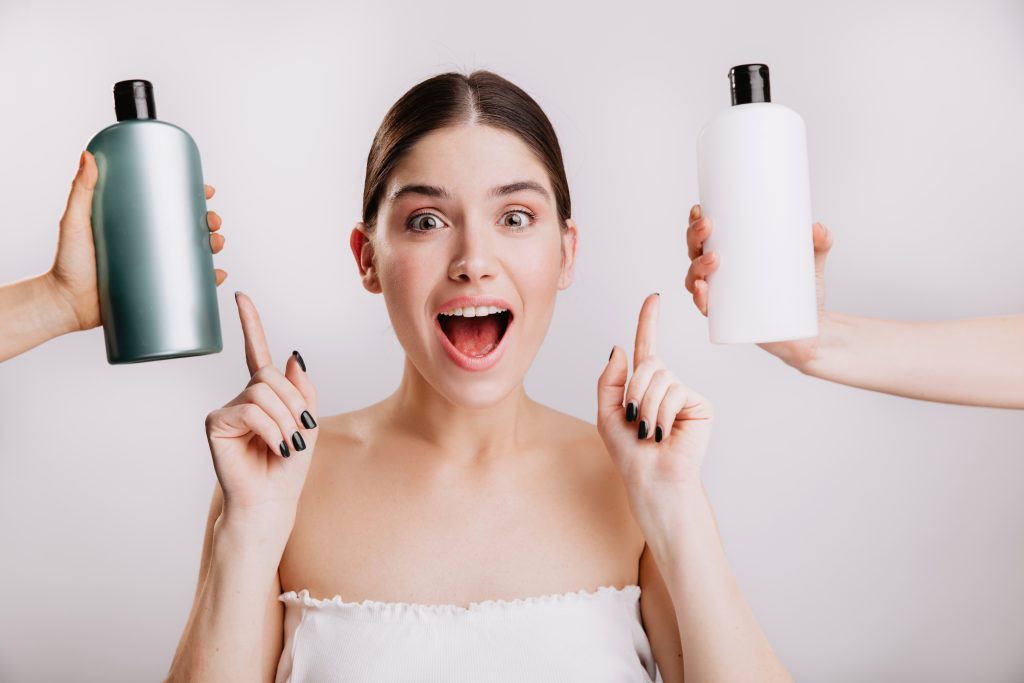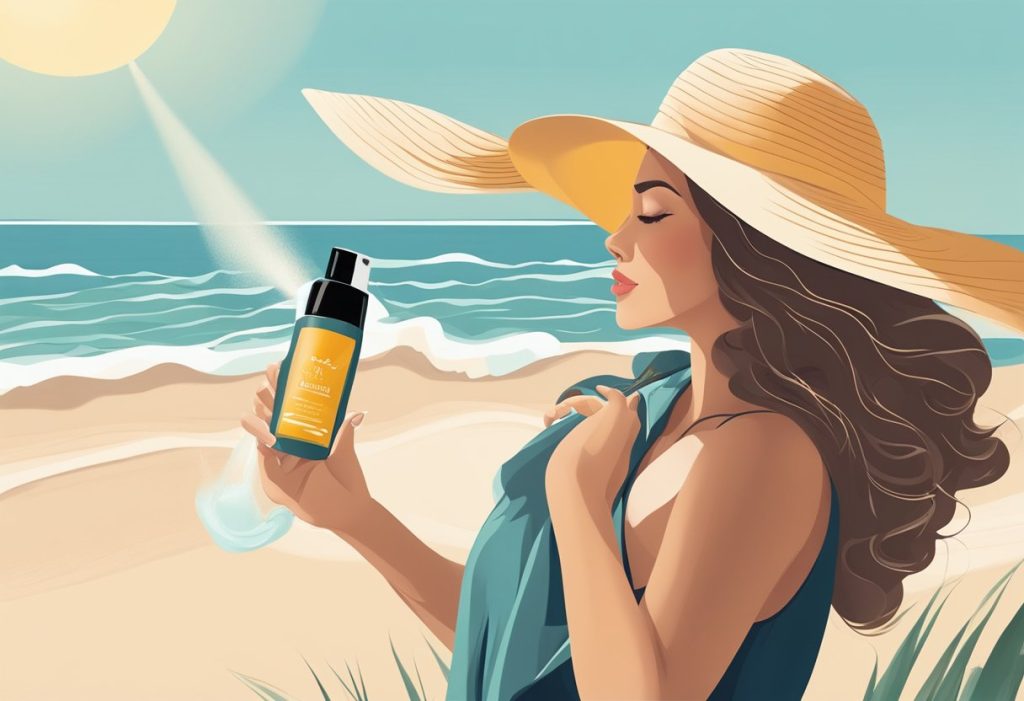Have you ever tried hair oiling?
It’s a beauty trend that got really popular in these last years, and for good reason.
Hair oiling involves applying natural oils to your hair and scalp to nourish and strengthen your locks. I decided to give it a try for six months and was pleasantly surprised by the results.
At first, I was skeptical about hair oiling. I have weak wavy hair that tends to get greasy and break quickly, so I was worried that adding more oil would make it worse. But after doing some research, I decided to give it a shot. I started with a simple routine of applying an oil blend to my hair and scalp once/twice a week, leaving it on for a few hours before washing my hair. If you are curious about my results, read on.
The Ancient Practice of Hair Oiling
You may have heard of the ancient practice of hair oiling, also known as champi in India. This practice involves massaging oil onto your hair and scalp, deeply nourishing the hair and scalp and boosting luster, shine, and overall health. Hair oiling has been a part of Ayurvedic medicine for thousands of years and is still widely practiced in India today.
According to Ayurveda, hair oiling is an important part of dinacharya, or daily self-care routine. It is believed that regular hair oiling can help promote hair growth, prevent hair loss, improve scalp health, and even help with stress relief.
To perform a hair oiling, you simply apply oil to your scalp and hair, massage it in, and let it sit for a period of time before washing it out. The type of oil you use can vary depending on your hair type and desired results. Some popular oils include coconut oil, sesame oil, and argan oil.
In addition to the benefits for your hair and scalp, hair oiling can also be a relaxing and enjoyable experience. The massage of the scalp can help relieve tension and promote relaxation.
If you’re interested in trying hair oiling for yourself, there are many resources available online to help you get started. Just remember to choose an oil that works for your hair type and to be consistent with your routine to see the best results.

Understanding Hair and Scalp Health
You may not realize it, but your hair and scalp are constantly changing. From weather changes to hormonal shifts, your hair and scalp can be affected by a variety of factors. Understanding how to maintain healthy hair and scalp can be challenging, but it’s essential for achieving luscious locks.
Your hair type, whether it’s straight, wavy, curly, or coily, can affect how you care for your hair. For example, straight hair may be more prone to oil buildup, while curly hair may be more prone to dryness. Knowing your hair type can help you choose the right products and treatments for your hair.
Hair oiling is one way to maintain healthy hair and scalp. Applying oil to your hair and scalp can help to moisturize and nourish your hair follicles, promoting healthy hair growth. It can also help to reduce hair fall and breakage, leaving your hair looking shiny and healthy.
Scalp health is also crucial for maintaining healthy hair. Your scalp is the foundation for your hair, and if it’s not healthy, your hair may suffer. A healthy scalp is one that is free of dandruff, itching, and inflammation. Regular scalp massages can help to improve scalp health by increasing blood flow.
By taking care of your hair and scalp, you can achieve healthy, happy hair. Incorporating hair oiling and scalp massages into your hair care routine can help you achieve your hair goals and maintain healthy hair and scalp.

My Results
So, I’ve been oiling my hair for 6 months so now and you’re probably wondering what kind of results you can expect. Well, let me tell you, it’s been a journey, but the results have been worth it.
Firstly, let’s talk about texture. I noticed that my hair is much softer and smoother than before. The oil has helped to nourish my hair and lock in moisture, leaving it feeling so much healthier.
Next, let’s talk about hair growth. While I didn’t notice a significant increase in length (yet), i did notice that my hair ends are much healthier. The oil has helped to strengthen my hair from the roots, which means less breakage and split ends. This, in turn, will help my hair grow longer and stronger over time.
One thing I also noticed at the beggining is that my hair felt a bit greasyer after washing it. That was because my hair wasn’t used to oils yet, and because i also used too much. It’s important to find the right balance of oil for your hair type. If you have oily hair, you may want to use less oil or only apply it to the ends of your hair. On the other hand, if you have dry hair, you may want to use more oil.

What Oil Blend Did I Use?
When it came to choosing the right oil blend for my hair, I did a lot of research and experimentation. I knew that different oils have different benefits, so I wanted to find a blend that would work best for my hair type and concerns, but also be simple and easy to make.
I settled on a blend of rosemary oil, olive oil, and castor oil. Here’s why:
- Rosemary oil: This essential oil is known for its ability to stimulate hair growth and improve scalp health. It also has a pleasant, invigorating scent that I love.
- Olive oil: This oil is rich in antioxidants and healthy fats that nourish the hair and scalp. It also helps to seal in moisture, which is especially important for dry or damaged hair.
- Castor oil: This thick, viscous oil is great for promoting hair growth and thickness. It also has anti-inflammatory properties that can soothe an irritated scalp.
I mixed one teaspoon of both olive and castor oil in, with 2-4 drops of rosemary oil. I mixed it up before use. I found that this blend worked really well for my hair, leaving it soft, shiny, and healthy-looking.
Of course, everyone’s hair is different, so you may need to experiment with different oils and blends to find what works best for you. I am looking to try jojoba oil out next.
But if you’re looking for a good place to start, I highly recommend giving this blend a try!
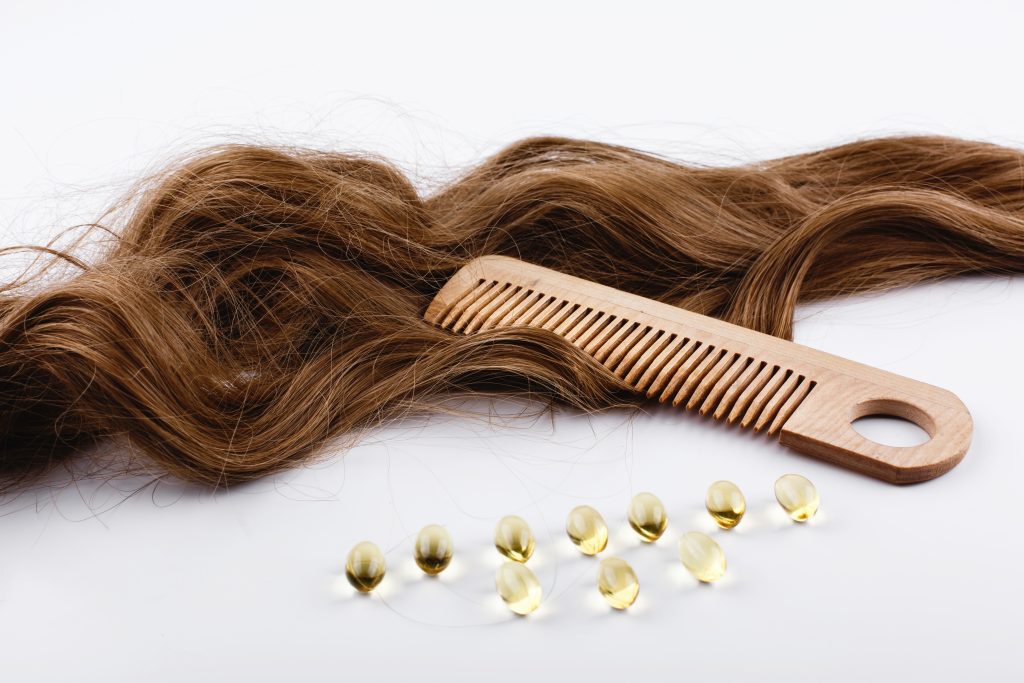
How To Choose the Right Oil for Your Hair
With all the different types of oils out there, how do you know which one is right for your hair? Don’t worry, I’ve got you covered.
First things first, consider your hair type. Is it dry, oily, or somewhere in between? Different oils work better for different hair types. For example, coconut oil is great for dry hair because it’s deeply moisturizing, while sesame oil is better for oily hair because it’s lighter.
Next, think about your hair goals. Do you want to promote hair growth, reduce dandruff, or add shine? Different oils have different benefits. For example, rosemary oil is great for promoting hair growth, while olive oil can help reduce dandruff.
Here’s a quick rundown of some popular oils and their benefits:
- Coconut oil: deeply moisturizing, promotes hair growth, strengthens hair
- Sesame oil: light, good for oily hair, promotes scalp health
- Almond oil: promotes hair growth, adds shine, reduces hair fall
- Olive oil: reduces dandruff, adds shine, deeply moisturizing
- Argan oil: adds shine, reduces frizz, protects hair from heat damage
- Jojoba oil: promotes hair growth, reduces hair fall, strengthens hair
- Amla oil: nourishes hair, reduces hair fall, adds shine
When choosing an oil, make sure to read the label carefully. Look for pure, natural oils without any added chemicals or fragrances. And don’t be afraid to mix and match oils to find the perfect blend for your hair.
Now that you know how to choose the right oil for your hair, it’s time to start oiling!

The Hair Oiling Process
So, you’ve decided to try hair oiling. Great choice! Here’s what you need to know about the hair oiling process.
- First things first, make sure your hair is dry. You don’t want to oil your hair when it’s wet as it can lead to breakage. If you have dandruff, you can add a few drops of tea tree oil to your hair oil to combat it.
- Next, choose your hair oil. There are many different types of oils out there, as you know by now. Choose the ones that suit your texture and your goals the best.
- Once you have your oil, warm it up slightly by placing the bottle in warm water for a few minutes. This will help the oil penetrate your hair better.
- Brush your hair out throughoutly.
- Now, it’s time to apply the oil. Section your hair and apply the oil evenly to your scalp. Massage your scalp gently for a few minutes to help the oil penetrate your hair follicles.
- Apply the oil to the length of your hair, making sure to coat it evenly. Don’t drench your hair with it!
If you have long hair, you may want to tie it up in a bun or braid it to keep it out of the way. Make sure you dont do any tight hairstyles, and avoid using elastics. Cover your hair with a shower cap or towel and leave the oil on for 1-5 hours. This will give the oil plenty of time to work its magic.
Then wash your hair with a gentle shampoo to remove the oil. You may need to shampoo your hair twice to ensure that all the oil is removed.
Repeat this process once or twice a week and you should start to see the benefits of hair oiling. Not only will your hair be softer and shinier, but it will also be stronger and less prone to breakage. Plus, the act of massaging your scalp can help reduce stress and increase circulation.
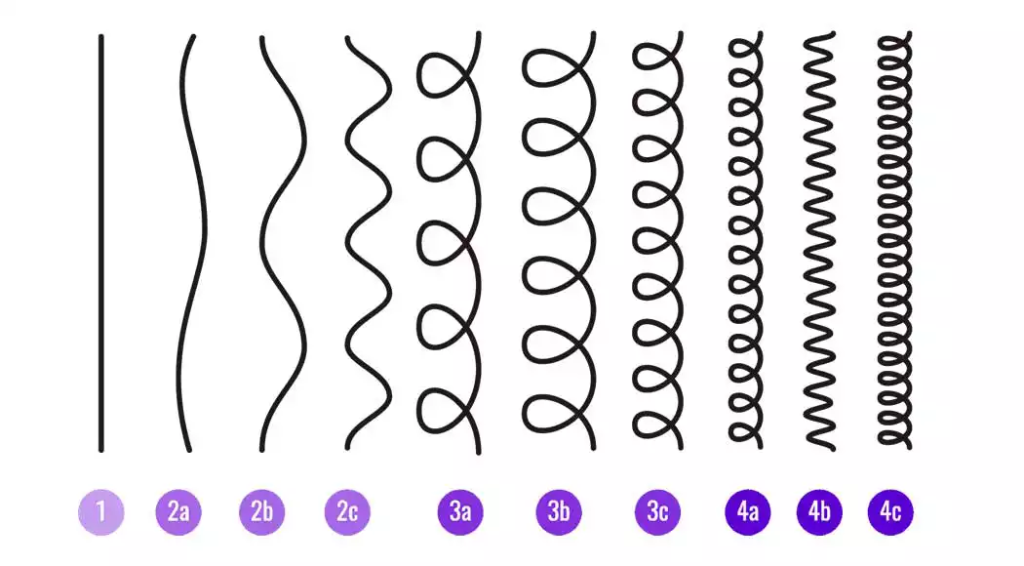
Effects of Hair Oiling on Different Hair Types
If you’re considering trying out hair oiling, it’s important to know how it may affect your specific hair type. Here’s what you can expect based on your hair type:
Fine Hair
If you have fine hair, you may be hesitant to try hair oiling because you don’t want your hair to look greasy. However, using a lightweight oil like jojoba or grapeseed can actually help add shine and nourishment to your hair without weighing it down.
Curly Hair
Curly hair tends to be drier than other hair types, so hair oiling can be especially beneficial. Using a heavier oil like castor can help add moisture to your curls and reduce frizz. Just be sure to apply the oil evenly throughout your hair to avoid any areas looking greasy.
Color-Treated Hair
If you have color-treated hair, you may be worried about using hair oiling products that could strip or fade your color. However, using a natural oil like argan or almond can actually help protect your color by adding moisture and preventing breakage. Just be sure to avoid any products that contain chemicals or sulfates that could damage your color.
Frizzy Hair
If you struggle with frizzy hair, hair oiling can be a game-changer. Using a lightweight oil like argan or jojoba can help tame frizz and add shine to your hair. Just be sure to apply the oil evenly throughout your hair to avoid any areas looking greasy.
Split Ends
Hair oiling can be especially helpful for preventing and treating split ends. Using a heavier oil can help nourish and strengthen your hair shaft, reducing the likelihood of split ends.
Chemicals and Salon Treatments
If you regularly use chemicals or get salon treatments like perms or relaxers, hair oiling can be a great way to nourish and protect your hair. Using a natural oil like argan or almond can help add moisture and prevent breakage caused by these harsh treatments.
Hair Loss
While hair oiling may not directly prevent hair loss, it can help strengthen your hair, reducing the likelihood of breakage and promoting healthy growth. Using rosemary oil can be especially helpful for stimulating hair growth and reducing hair loss.
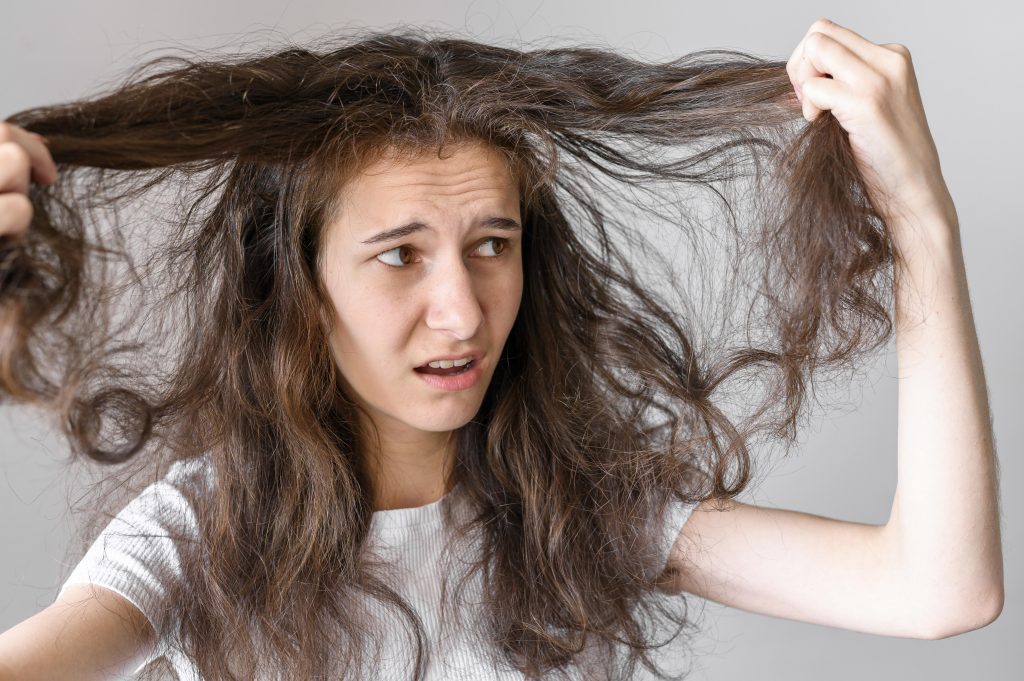
Possible Side Effects and Precautions
Hair oiling can be a great way to improve the health and appearance of your hair, but it’s important to be aware of possible side effects and take precautions to avoid them.
Allergic Reactions
Before you start using a new hair oil, it’s important to do a patch test to make sure you’re not allergic to any of the ingredients. To do a patch test, apply a small amount of the oil to the inside of your wrist or behind your ear and wait 24 hours to see if you have any adverse reactions. If you experience itching, redness, or swelling, wash the oil off immediately and don’t use it again.
Greasy Hair
One of the most common side effects of hair oiling is greasy hair. If you use too much oil or don’t wash it out thoroughly, your hair can look greasy and weighed down. To avoid this, use a small amount of oil and make sure to shampoo your hair thoroughly after oiling.
Acne
If you have acne-prone skin, using hair oil can potentially make your acne worse. The oil can transfer from your hair to your skin, clogging pores and causing breakouts. To avoid this, keep your hair away from your face and make sure to wash your face thoroughly after oiling.
Stained Clothes and Bedding
Hair oil can stain clothes and bedding, so it’s important to be careful when using it. To avoid stains, use a towel or old t-shirt to protect your clothes and bedding, and make sure to wash them immediately if they do get stained.
Sun Damage
Some hair oils contain ingredients that can make your hair more susceptible to sun damage. If you’re going to be spending time in the sun, make sure to wear a hat or use a hair product with SPF to protect your hair.
Overall, hair oiling can be a great way to improve the health and appearance of your hair, but it’s important to be aware of the possible side effects and take precautions to avoid them. By doing a patch test, using a small amount of oil, and washing it out thoroughly, you can enjoy the benefits of hair oiling without any negative side effects.
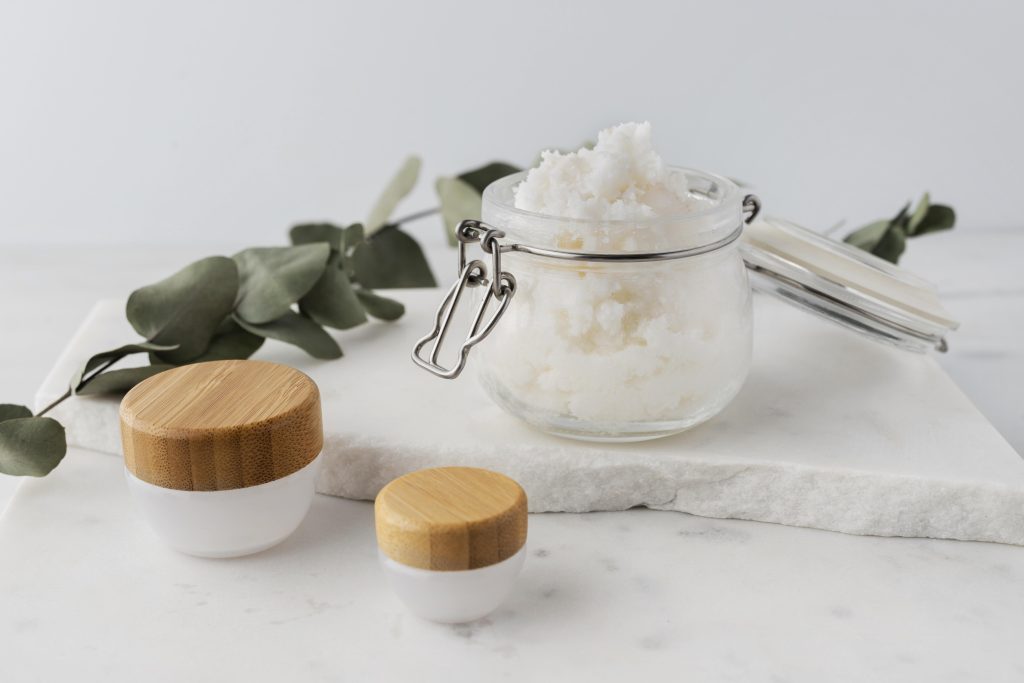
Frequently Asked Questions
What are the benefits of hair oiling?
Hair oiling has several benefits. Firstly, it helps to nourish and moisturize your hair, making it soft and shiny. Secondly, it can help to prevent dandruff and other scalp conditions. Thirdly, massaging your scalp with oil can help to improve blood circulation, which in turn can promote hair growth.
Which is the best hair oil for hair growth?
There are several types of hair oil that are known to promote hair growth. Rosemary oil, castor oil, and argan oil are some of the most popular options.
How long should you keep oil in your hair?
The length of time you should keep oil in your hair depends on several factors, such as the type of oil you are using and your hair type. Generally, it is recommended that you leave oil in your hair for at least an hour. However, some people prefer to leave oil in their hair overnight for maximum benefits. It is important to note that leaving oil in your hair for too long can cause buildup, hair loss and make your hair greasy.
How long does it take to see the benefits of using hair oil?
The time it takes to see the benefits of using hair oil varies from person to person. Some people may notice a difference in their hair after just a few weeks, while others may need to use hair oil consistently for several months to see results. It is important to be patient and consistent with your hair oiling routine to see the best results.
Can leaving oil in your hair for too long cause damage?
Leaving oil in your hair for too long can cause buildup, hair loss and make your hair greasy. Also, if you have a sensitive scalp or are prone to scalp conditions, leaving oil in your hair for too long can exacerbate these issues.
Conclusion
Congratulations! You made it to the end of the post.
Throughout this experience, you’ve learned the importance of choosing the right oil for your hair type, as well as the benefits of massaging your scalp regularly. You’ve also discovered the importance of patience and consistency when it comes to hair care.
Remember, hair oiling is not a magic solution that will instantly transform your hair. It requires time and effort to see results, but the payoff is worth it.
Here are a few key takeaways from your hair oiling journey:
- Oiling your hair regularly can help prevent dryness and breakage, leading to stronger, healthier hair.
- Massaging your scalp while oiling can improve blood circulation and promote hair growth.
- Choosing the right oil for your hair type is crucial. Experiment with different oils to find the one that works best for you.
- Consistency is key. Make hair oiling a regular part of your hair care routine to see the best results.
Overall, this 6-month hair oiling journey has been a success and i will definetly keep doing it.
I hope you found this article helpful. If you have any other wavy hair care tips, feel free to share them in the comments below.


